Fort Worth Zoo announces ‘monumental’ rare birth of critically endangered species
The Fort Worth Zoo announced Thursday a remarkably rare birth of four gharial crocodiles, a critically endangered species that the zoo has tried to breed for more than a decade.
This is only the second time in U.S. history that gharial crocodiles have reproduced in captivity. Only about 200 adults able to breed remain in the wild in South Asia. Some 35 individuals are living among nine institutions in North America.
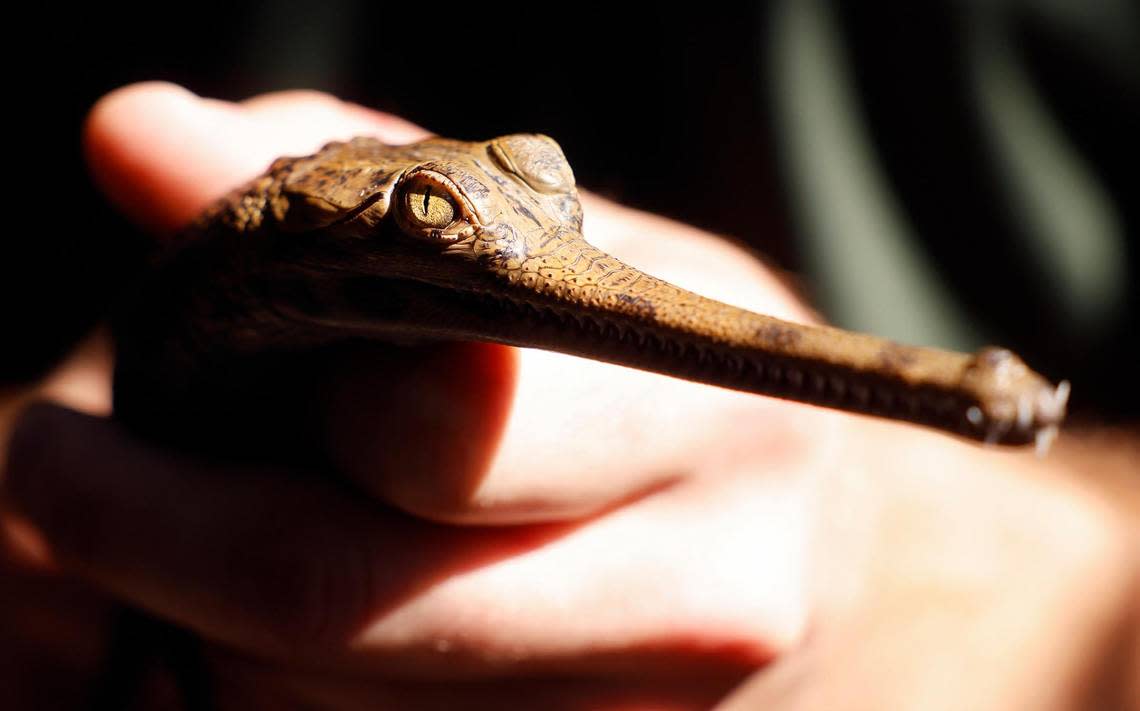
Vicky Poole, the associate curator of ectotherms at the Fort Worth Zoo, said gharials are a keystone species, meaning that they have a direct impact on the other species in their ecosystem. Unfortunately, they are the most endangered crocodilian species in the world, according to Poole.
“The Fort Worth Zoo’s success of hatching four individuals is a major milestone for the conservation of this species, quadrupling the number of gharials ever born in the United States,” Poole said.
Gharials came close to extinction in the 1970s, according to the Smithsonian’s National Zoo & Conservation Biology Institute. The biggest threat is habitat loss, unsustainable fishing practices and hunting.
Historically, the gharial’s range spanned rivers of Bangladesh, Bhutan, India, Myanmar, Nepal and Pakistan, according to the Smithsonian. The species remains only in Nepal and northern India.
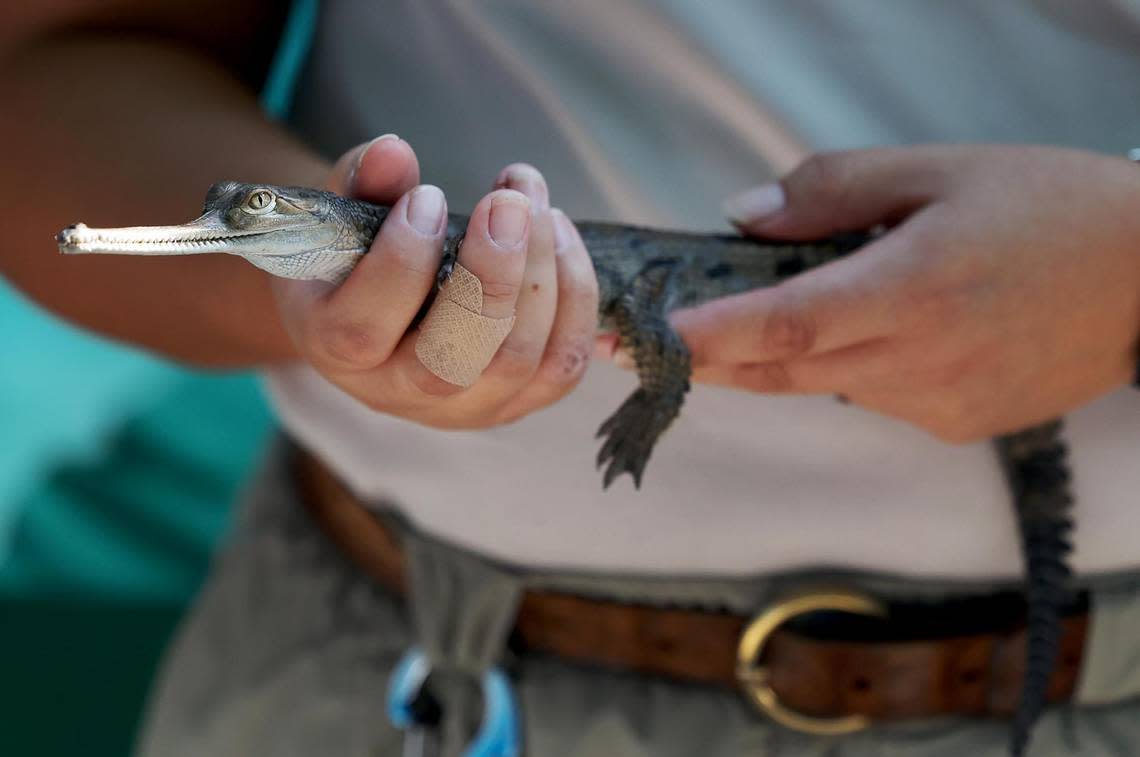
Gharials are one of the largest croc species, growing to 20 feet with a distinctive long, thin snout filled with razor-sharp teeth. Zoo officials proudly showed off the four tiny hatchlings, born in June and July, at a press conference Thursday morning. They believe two are male and two are female, but Poole said they won’t know for a while.
Gharials arrived at the zoo in 1995. When the zoo’s herpetarium, known as the Museum of Living Art, opened in 2010, the gharial exhibit was built for the specific purpose of reproducing the species. Since then, the zoo staff have constantly manipulated conditions to facilitate successful breeding.
[PHOTOS: See what Fort Worth Zoo looked like in 1940s-50s]
Poole said the females initially dumped their eggs in the water instead of building a nest in the sand. Heat coils were added to the sand to keep it the right temperature for nesting. Then the staff realized the eggs weren’t being properly fertilized, so they started modifying water temperature to help with that.
Poole likened the process to cracking a code.
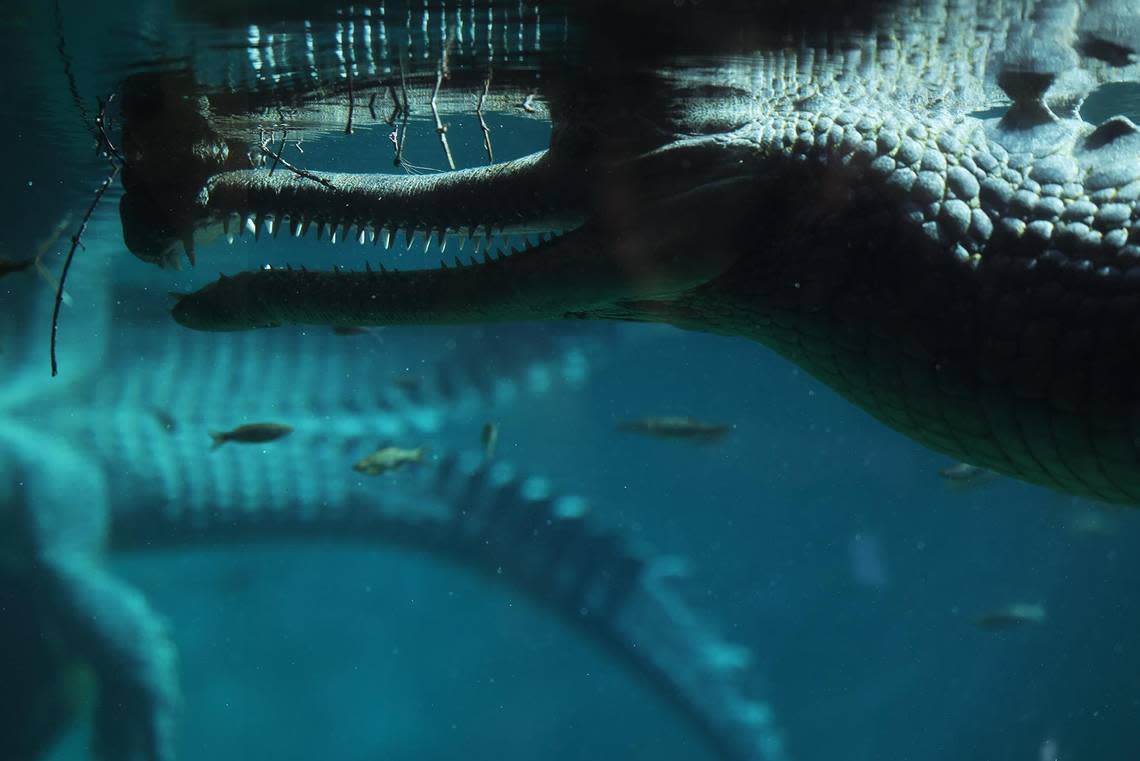
“It’s usually trying to solve one little piece at a time,” she said. “So incubation is one thing, nesting is another thing. So we’ve got all these different layers we’ve got to provide to them.”
The new gharials are not on exhibit yet. Zac Foster, a supervisor of ectotherms at the zoo, said they are spending a lot of time in the water and have already started catching their own fish.
They don’t have names yet, but Foster said the staff will name them when the gharials get a little older and get further into the training process.
Foster said they can tell the hatchlings apart by their varying sizes and the bands on their backs.
“They’re all individual, just like our fingerprints,” Foster said. “No two gharial has the same kind of banding patterns, so we can identify them that way.”
The Fort Worth Zoo is currently home to three adult female gharials and one male. The four hatchlings came from two mothers, Raani and Snaggle, and father Big Boy.
Poole said the other female, Wally, laid eggs that didn’t hatch, but they are optimistic about better results next year.
“We are ecstatic she nested this year,” Poole said. “Because the other girls are so much bigger than her, they can push her off the nest, the nesting beach. So it’s kind of exciting to know that she figured out a way to nest and we’re actually going to continue to do some improvements on the beach as always, and try to see what will help that better survivorship next year.”
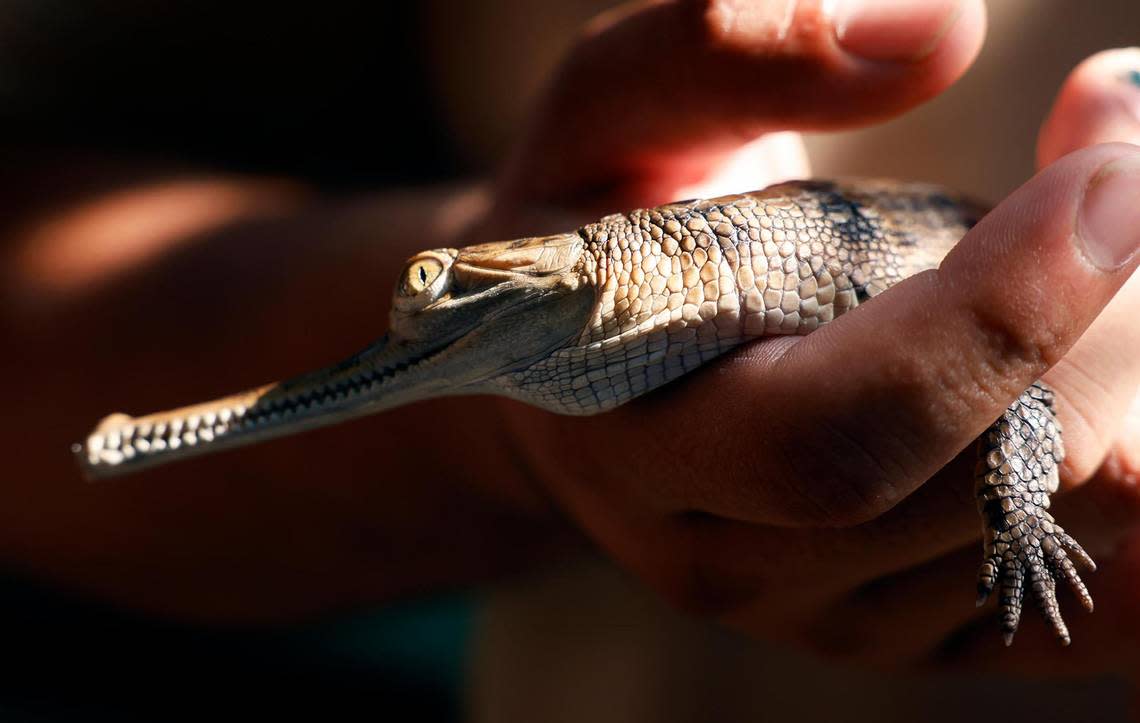
Poole said now that they are learning what works, they can pass it along to other institutions.
“The big thing we’re really excited about with these guys is that we have a potential to add to the information knowledge about gharials,” she said. “Rearing gharials in captivity, the breeding cycles, how we can all refine it, the medical care for these individuals.”
The herpetarium is involved in several other conservation projects, including Texas horned lizards, Chiricahua leopard frogs, Puerto Rican crested toads and Panamanian golden frogs.
“Some of it is captive reproduction, some of it is ... in the wild, some of it is working with partners in range countries, some of it is financial support,” Poole said. “So, you know, conservation has so many different layers to it.”
The herpetarium houses a lab where researchers successfully produced the first Houston toads via in-vitro fertilization in 2021.
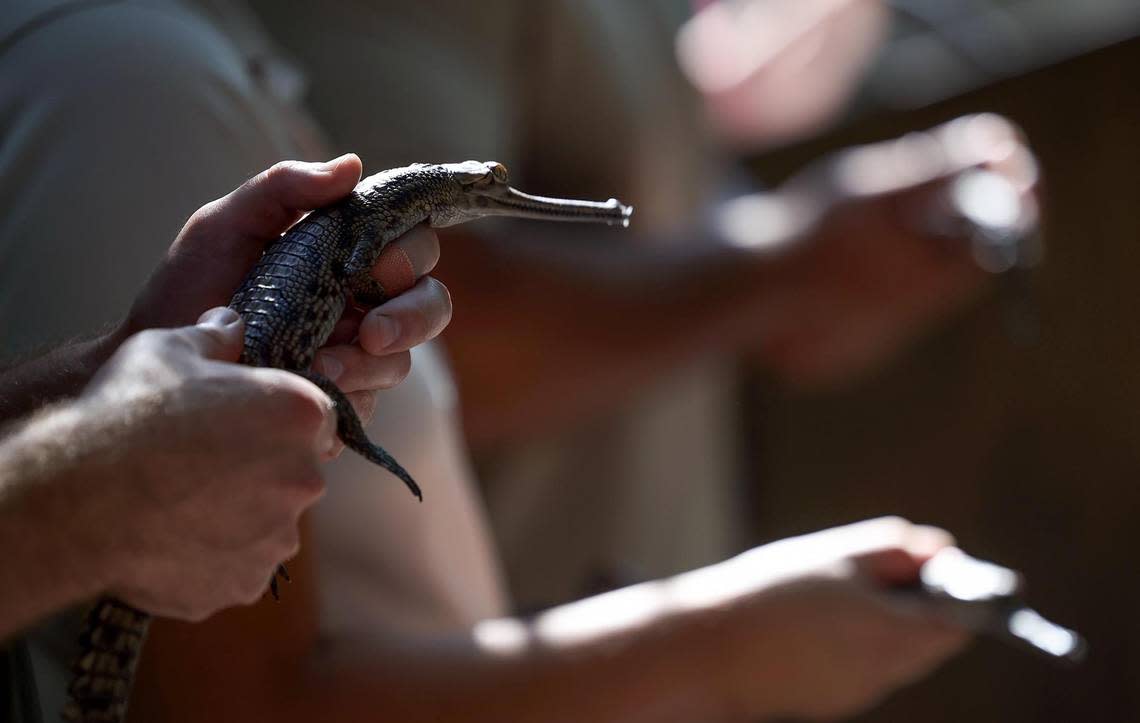
The historic news Thursday comes on the heels of the zoo’s grand opening of its latest habitat, Predators of Asia and Africa, this summer. The habitat features a pride of lions along with two species that have never been on display in Fort Worth — the clouded leopard and the African leopard.
Other predators in the new habitat include cheetahs, African painted dogs and two Sumatran tigers. A pair of striped hyenas returned to the Fort Worth Zoo from Abilene.
[PHOTOS: Fort Worth Zoo's new habitat: Predators of Asia & Africa]
The new habitat is the third phase of “A Wilder Vision,” a $130 million four-phase project to create more naturalistic and enriching habitats for animals, along with new ways for visitors to interact with them.
Phase one, the African Savanna, opened in 2018 with reticulated giraffes, ostriches, pink-backed pelicans and two species of African antelope. Phase two, Elephant Springs, opened in 2021.
The fourth phase, Forests and Jungles, is projected to open in 2025.
